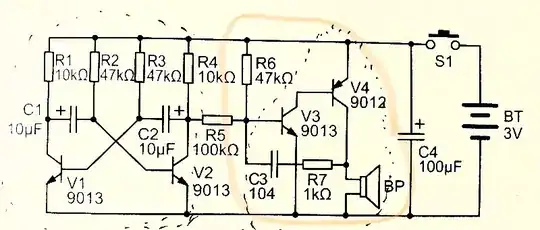Astable multivibrator coupled with complementary astable multivibrator:
I tried to build this schematic on a breadboard, but the complementary astable multivibrator circuit on the right does not work properly. The left astable one works fine for me.
Is there any advice to improve its reliability and reproducibility by adding something or replacing something?
